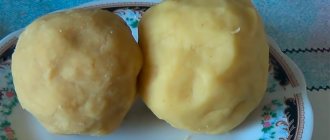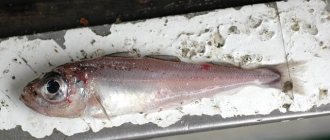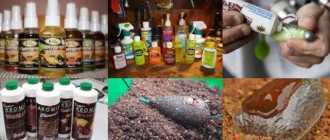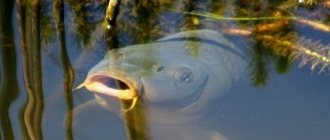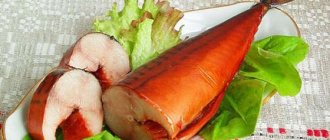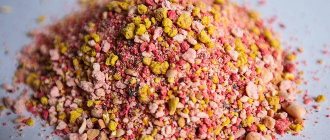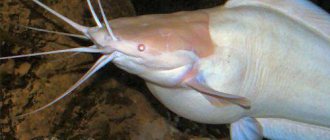What is mastyrka
Mastyrka is a bait of plant origin, which is prepared on the basis of semolina flour, peas or potatoes. Various additives are often used in cooking - honey, sugar, oils, food coloring, etc.
It is used quite often, since such bait is almost the best for any type of non-predatory fish.
Representatives such as:
- Bream.
- Crucian carp.
- Roach.
- Verkhovodka.
- Carp.
It is best to use mastyrka in the summer - the fish are most active, which means they will be attracted to any bait. In the case of summer fishing, you can use food coloring to attract fish with an unusual color.
Winter fishing requires special recipes, because the fish will not react to a ball of peas - the nutritional value must be increased. The latter is done through various additives. Vitamins can also be used as one of them.
Methods of using mastyrka
Almost all non-predatory fish are successfully caught using mastyrka. You can eat porridge as follows:
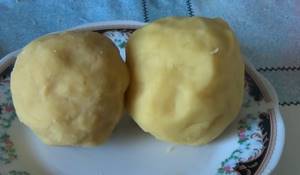
As bait for fishing with a fishing rod. Using mastyrka made from semolina and pea flour, it is excellent to catch roach, silver bream, perch, crucian carp, tench and other fish that actively bite on float tackle.- As bait for the spring on the killer tackle for crucian carp and crucian carp.
- To feed the fishing point, preferably far from the shore. It is very simple to use the product in this way: you need to cut the bait into small pieces and simply throw them into the fishing spot. It is best to use the method in the evening so that the fish gather at night in a certain place in the reservoir, and in the morning they can be actively caught.
Preparing mastyrka
It is very easy to prepare such bait, since the entire procedure is carried out in several steps.
The main ingredients you will need:
- Peas.
- Semolina.
- Water.
Supplements also needed:
- Honey.
- Unrefined sunflower oil.
- Eggs.
- Sugar.
- Food colorings.
You need to be extremely careful with additives, because although it is quite easy to attract fish in this way, it is also quite possible to overdo it.
The only utensils you need are an aluminum pan (preferably a new one) and a masher (wooden or metal).
Cooking according to the general recipe in the form of a diagram looks like this:
- The first step of preparation is to sort through the peas. You will need about two hundred grams of it, but you will have to sort everything out quite carefully. It is better not to allow black or greenish peas to get into the total mass.
- The resulting “clean” peas must be thoroughly washed.
- Soak the peas and leave for several hours.
- , there should be quite a lot of water in the pan in which the peas were soaked - one and a half fingers more than the level of the peas. The latter, under normal conditions, will lie at the bottom.
- The pan must be put on fire - as soon as the water boils, reduce the intensity and leave everything to cook under the closed lid.
- The mixture on the stove should reach a soft state - after this, the lid should be opened slightly so that the water boils away faster. There should be no water on top of the peas.
- The mixture must be mashed with a masher.
- Flour is added to the mixture - you need to knead until the mixture can be easily taken with your hands and formed into a shape that is convenient for you.
- The pea-flour mixture must be shaped into balls and placed in an enamel or plastic container.
- While they are cooling, carefully ensure that condensation does not form on the walls. To do this, you need to turn the future bait over from time to time. In addition, you can lay the fabric down in advance - this will protect it from getting wet, which is undesirable.
The general recipe can be easily "modified". You should only add honey or sugar along with the flour during cooking. This increases the attractiveness of mastyrka, increasing its nutritional value and adding pleasant odors. You can also use vegetable oil. It is added at the very end, when balls have already been formed from the total mass. With oiled hands, you need to “envelop” the bait, then re-mix and mold it into shape.
There is another way to prepare such mastyrka - instead of soaking and boiling the peas, you can grind them into flour.
For this, only dry peas are used - a regular coffee grinder will do for this purpose. The proportions here also change - semolina and pea flour are poured in the same quantity. Next, you need to fill everything with water and stir until a homogeneous mass is obtained. You will need the same amount of water as the mixture of cereals takes together.
In addition, you can use store-bought pea flour instead of ground dry peas - this method is used less often, since it is quite difficult to find such flour on the open market.
An important factor is that you need to immediately determine the size of the future ball. You can take several with you on a fishing trip, but you won’t be able to use the same ball repeatedly, taking it back and forth.
That is, you need to calculate exactly how much bait you will need for one fishing trip. If you are not sure of your calculations, make smaller balls so that you can take several with you. Then there will be less missing bait.
Microwave cooking
To prepare mastyrka in the microwave, you need:
- pea flour - 0.5 cups;
- semolina – 0.5 cups;
- drinking water – 150 ml;
- unrefined sunflower oil – 1 tbsp. spoon;
- honey – 1 teaspoon.
Cooking technology:
- in a deep bowl (which can be placed in the microwave) mix pea flour and semolina;
- pour boiling water over the dry mixture;
- stir with a spoon until smooth;
- put the bowl with the resulting mass in the microwave for 3 minutes;
- Mix the resulting mass again with a spoon, add sunflower oil and honey;
- the mass is still quite hot, so for high-quality kneading, the mastyrka is placed on a cloth and kneaded directly into the cloth;
- form a ball from the mass and wrap it in cloth or cling film to prevent drying.
Video: pea mash in the microwave
Recipes for preparing mastyrka for different types of fish
Mastyrka for crucian carp is quite common, since this type of fish is very picky.
- The basis is traditional ingredients - peas and semolina. You really don't need to cook anything. The peas need to be soaked, and quite thoroughly - it will take about twelve hours to do everything. Then you need to grind it in a meat grinder. Next you need to add semolina until the resulting mass becomes sufficiently hard. You need to knead until completely homogeneous. If the mastyrka is still too hard, you can use pea broth - add a little at a time, continuing to stir. When the desired consistency is achieved, the process ends.
- The second option is more “exotic”. You will need potatoes, vegetable oil, bread and flour. The latter, by the way, is needed exclusively from corn. You need rye bread, and it must be coarsely ground. Finely crumbled bread is mixed with boiled potatoes (they will need to be mashed with a masher in the same way as peas). Next, add flour until the consistency becomes firm enough. Lastly, season everything with sunflower oil; however, corn oil will also work.
Mastyrka for bream is also common, since this fish loves plant foods - and therefore reacts to such bait. The recipe is quite traditional, since it includes, in addition to peas and semolina, only honey. True, the cooking process is slightly different:
- The peas need to soak overnight.
- You need to cook it until it softens, but does not lose its shape (about one and a half to two hours is enough).
- Pass the peas through a sieve so that all the husks remain outside - here you can press the peas so that they pass through the cells.
- Add a teaspoon of honey (teaspoon) and stir.
- Next, you just need to add semolina flour until the mixture becomes hard enough.
Mastyrka is quite specific for carp, since this species is a kind of gourmet among fish. There are quite a lot of ingredients, and the recipe is complex.
Will be used:
- Potato.
- Peas.
- Corn/semolina.
- Processed cheese/rolled oats/makukha.
The last point can be added as desired - perhaps you can use what is in your refrigerator.
- Potatoes must be boiled without peeling.
- Mash with a masher until smooth.
- Add pre-cooked and mashed peas (the proportion here should be six parts of peas to four potatoes).
- Cook the mixture as in other recipes.
- Add flour until desired consistency is achieved.
- Pour in or add remaining additional ingredients.
- Mix the resulting mass.
How to cook hominy for fishing
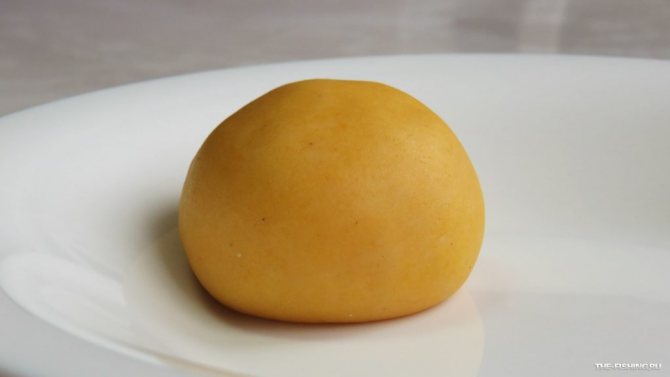
In cooking, mamaliga is a thick corn porridge, a popular Moldavian and Romanian dish. Having slightly changed the recipe, anglers use hominy as a bait for catching any peaceful fish, as well as bait for open feeders and rigs such as “nipple”, “plug”, “crucian killer”.
The easiest way to prepare hominy for fishing is to boil it in a plastic bag. That is, you can simply prepare hominy without dirty dishes and is perfect for catching carp, crucian carp, grass carp, bream on a float and on bottom gear, such as a feeder.
Of course, you can simply cook hominy like regular porridge, but it will not always be possible to achieve its correct density and the ability to hold well on the hook while fishing. In addition, not everyone likes to wash burnt pans after cooking such porridge.
Mamalyga in a bag
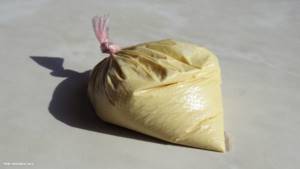
The advantage of this method is that you do not need to stand at the stove and make sure that the porridge does not burn, but the disadvantage is that it takes more time to cook.
Test composition:
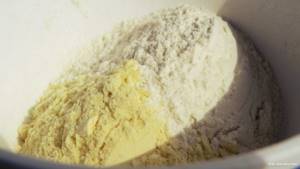
- Corn flour - 2 tablespoons;
- Wheat flour - 1 tbsp;
- Water.
This amount will be enough for one fishing trip if you use hominy as a bait, but it can be increased proportionally. If corn flour is not available, it can be made from cereal by grinding it in an electric coffee grinder.
Preparation:
- Corn and wheat flour are mixed together and lightly fried in a dry frying pan (optional);
- Water is poured into a container with flour in small portions, and everything is mixed until the consistency of sour cream is obtained;
- A plastic bag is placed inside a glass or cup, into which creamy dough is poured, after which the bag is tied with a knot (sealed and without air);
- The bag with the batter is placed in boiling water for 35-40 minutes, then the heat is turned off, and the bag of hominy remains in the water until it cools.
The density of hominy depends on the time it is cooked, as well as on its volume. The longer it cooks, the denser it is.
After cooking, hominy can be cut into cubes for attachment or kneaded into an elastic dough.
Watch a short video that demonstrates the entire process of preparing hominy in a bag:
In a similar way, you can prepare hominy from corn grits. It is not as dense as flour, but in certain cases this is necessary. For example, when hominy is used as bait.
Mamalyga in 10 minutes
This method allows you to make hominy in the shortest possible time. It is prepared only from corn flour and water.
Preparation:
- Boil about 100 ml of water and reduce heat to low;
- Add a small amount of cereal and stir until it reaches the consistency of an elastic dough;
- Turn off the heat and wrap the resulting dough in a napkin;
- Let the hominy cool, remove from the napkin and knead the dough with your hands.
The aromatic mamalyga made from corn flour is ready.
The whole process on video:
Features of the preparation and use of mastyrka depending on the season
For the summer and spring seasons, mastyrka is perfect - this bait can be used in any fishing trip. The point here is that the fish will actively react to any bait offered, since during this period they are most active.
The winter season has a different, special approach. The fact is that any winter fishing, and especially ice fishing, requires special bait. Mastyrka can help here too, but preparing it will not be as easy as for other seasons. It is important to remember here that the fish are lazy, and therefore will not react too quickly to the bait. Therefore, you need to add something during cooking that will tempt your future catch.
In such cases, fishermen use products such as:
- Eggs;
- Honey;
- Vegetable oil;
- Vitamins (crushed tablets).
All these ingredients can be used both in summer and spring, but in winter you cannot do without them. However, it is quite possible to lure fish with dye - for example, red bait in such cases shows its worth. Although you have to be careful - it’s better to use something natural as a dye.
Mastyrka storage
It is not always possible for a fisherman to prepare fresh mastyrka before going to a pond. After all, spontaneous trips also happen when there is simply not enough time. Some people buy a special shelf-stable store-bought mask, but often it does not show the expected results.
To always have mastyrka on hand, you need to prepare it. To do this, the prepared mass is divided into portions, packed in sealed bags and stored in the freezer. The disadvantage of this method is that the resulting nozzle loses its aroma in comparison with freshly prepared one.
The second option is that the fisherman prepares a “semi-finished product” - pea puree. We put it in bags or plastic cups and put it in the freezer. Then, before fishing, all that remains is to finish cooking the mastyrka, adding semolina and flavorings.
How to plant a mastyrka
You can set the bait in different ways. The methods differ depending on who exactly you are catching:
- When the bite subsides a little, you can form a small maggot out of the bait and put it on a small hook. It performs quite well when catching bluegill, bleak and even small crucian carp.
- Most often, balls are made from mastyrka - it needs to be hooked deep enough. It is universal, and therefore there are no special tips or recommendations.
- For small fish, the ball needs to be placed deeper, on the very fore-end. This way you can catch enough rudd or bream.
- An oblong drop - the hook goes deep enough. Quite versatile, and therefore can be used whenever you want.
- A half-drop, brought to the level of the sting, shows itself perfectly when catching roach.
Proper storage and attachment
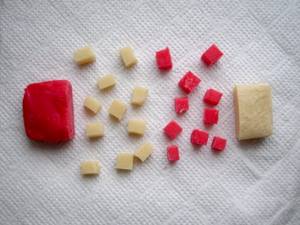
The prepared nozzle must be stored correctly so that it does not lose its properties.
Basic recommendations:
- After balls of the required size are made from mastyrka , each of them needs to be wrapped in fabric (cotton or chintz is considered the best), then placed in cling film.
- the finished nozzle exclusively in a dark and cool place.
- Avoid exposure to the sun.
- The ideal storage place is the freezer.
Defrosting is required immediately before fishing , and the product should be transferred from the freezer to the refrigerator shelf. The main thing is not to remove it from the fabric.
There are certain ways to put a mastyrka on a hook. If you stick to them, then such a bait will not slip off at the moment of casting and the crucian carp will not be able to spit it out.
Main methods:
- The ball, made in advance, is placed in such a way that the sting, together with the barb of the hook, is completely hidden in the mask.
- Shape the mastyrka in the form of a maggot (oblong shape) and carefully place it on the hook, while the sting is allowed to come out a little. Note: only small hooks, size No. 1 to No. 3, are suitable for this method.
- Take mastyrka and other bait , for example, maggot or worm. Everything is placed on the hook together, in this case, the mastyrka is closer to the sting.
- A ball is made that fully matches the width of the hook. It is inserted in such a way that the mastyrka is clearly in the neck of the hook, in other words, between the sting and the fore-end.
You can attach it in any way, you need to select it taking into account personal preferences and convenience, however, if the bait is lost at the time of casting, it is recommended to change the attachment option.
An important point: a properly prepared and mounted bait can easily withstand 3 or more casts.
How to store finished mastyrka
In fact, such bait will not be stored for a long time - therefore, it is still not worth cooking a lot. If it happens that you have prepared too much bait, there are several ways to preserve it longer:
- Freezing is the simplest and most popular. It is enough to put the mastyrka into tightly closed bags in parts. Such bait is stored for a very long time, almost unlimited time. But there is also a minus - the aroma is not the same, which means the bite will be less.
- You can freeze pea puree - sealable plastic cups are suitable for this purpose. There is nothing complicated about this, but it will save you from many problems. It will be enough to add flour before fishing, and you are good to go.
- Drying is the final method of preserving bait. If you don’t have a freezer at hand, you can make do with an oven, microwave, or even a windowsill. The mass rolled into a sheet must dry. After that, grind it into flour. Then put it in jars and mix with water as needed. The downside is still the same - a weak smell, which means a smaller catch.
Blitz tips
Here's something else you should know about cooking:
- Do not use stale peas.
- Add only clean and fresh water or broth to the “dough”.
- You need to knead the mass with your hands - this is the only way to accurately feel the consistency. As a result, the mixture should not stick to your hands.
- But when using your own hands, take care of their cleanliness - otherwise the “life” of the mask will be reduced by orders of magnitude.
- For high-quality freezing, wrap the formed mass first in cotton fabric (tuck the corners in carefully) and then in food-grade cellophane.
- Mastyrka may become more liquid after defrosting, so take some flour with you.
- The same applies to the first experiments. It is best to carry a jar of semolina with you, otherwise there will be no catch - when casting, the bait will simply scatter in the air.
- Honey as an additive must be pure and not fermented.
- Don't waste time cooking.
- Carrot juice can be used as a natural dye.
- Powdered vitamins, like Revit or Hexavit, work well as a supplement.
- The same vitamins can also become dyes if there are no food items on hand.
- Fresh and good products used in cooking allow the mastyrka to “live” throughout the entire fishing trip.
What is mastyrka and when is it best to use it when fishing for crucian carp?
This type of bait and bait is used by many anglers. When fishing for crucian carp, the best option is bait and pea bait. When placing such a bait on a hook, the angler is confident that it will remain secure on the hook and that the number of bites will increase.
Important! When fishing for crucian carp, mastyrka will help increase the catch in the warm season, when the fish prefer eating vegetable baits and baits. The cold season is the best time to use animal bait.
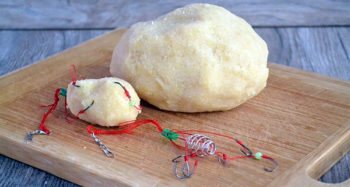
What kind of miracle remedy is this that can attract not only crucian carp, but also almost all white fish? This is a simple herbal bait that does not require the use of expensive ingredients.
And you can make it in any kitchen and even on the go. Industrial bait is also sold, but, as experience shows, the best remedy is a homemade substance with the addition of various ingredients. Some fishermen pass down secret recipes from generation to generation.
But the main components of any mask are the same:
- Split peas: Many fishermen grind peas into flour, speeding up the preparation of the all-purpose remedy. If it is not possible to get pea flour, you can soak old peas for several days and then boil them.
- Semolina: This product is important to use for catching any white fish. Crucian carp and roach especially love it.
- To increase calorie content, some fishermen advise adding an egg.
- Plain water without gas: if you are fishing, you can use water from a reservoir.
- To add viscosity, flour is added to the bait.
- Carp and crucian carp love the taste of honey, so it is also used in cooking.
- It is recommended to add a little red dye to the bait - this will give it additional catchability.
- Mushroom or other scraps purchased from a creamery.
- It is recommended to add flavorings, but you should not get carried away with them.
Important! Some fishermen believe that there can never be too many flavorings, but this misconception is easily refuted during fishing, when an amateur is left without a catch when crucian carp activity is high. Excessive use of flavorings will repel fish rather than attract them.
All substances for mastyrka will work and attract crucian carp only when the angler knows the answer to the question of how to prepare mastyrka for catching crucian carp.
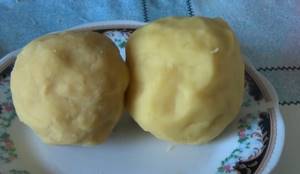
How to properly prepare pea mastyrka (recipes)

There are many recipes for making it, but pea mastyrka for crucian carp and crucian carp is prepared in the same way at the initial stage.
More clearly, you should go to YouTube and type in the search window, “how to prepare mastyrka for catching crucian carp, video.”
The number of videos will please any novice fisherman. The whole process is divided into several stages:
- Sort out the peas: for one serving: it is better to prepare 200 g of cereal. Spoiled or unripe peas should not be allowed to enter the total mass of peas.
- Selected grains are thoroughly washed and soaked for 2–3 hours. The peas will be ready to continue cooking when they have all settled to the bottom.
- The water in the pan should remain 10–15 mm above the cereal layer; now the pan is placed on the stove. Bring to a boil, turn down the flame, cover with a lid and leave to simmer over low heat.
- When the peas become soft, open the lid. In this case, the water will boil away faster.
- Grind the finished mass and crush it with a masher until a homogeneous mass is formed.
- To increase the viscosity, add flour and knead until the porridge does not stick to your hands.
- At the same time, honey, sugar and selected flavorings are added.
- The finished mass is divided into several balls.
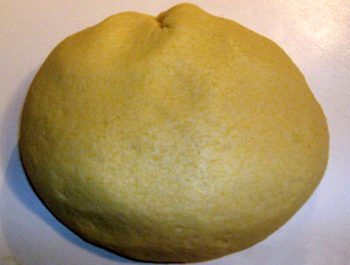
That's it, the pea mastyrka for crucian carp is ready. The balls are placed in an enamel bowl and gradually cool down. At the same time, do not let the balls lie in water or condensation on the walls of the dish. Therefore, after a while they should be turned over and the water drained. It is better to place a cloth under the mask, but it must be constantly twisted.
Many fishermen advise adding vegetable oil to mastyrka; it is very loved by peaceful fish; many add anise oil. There are many options, as well as recipes for adding flavors. But the basic rule “do no harm” is followed by all experienced amateurs.
To make a good mastyrka with your own hands, videos on the Internet advise using pea flour or cereal ground in a coffee grinder . In this case, the bait is prepared in the following way:
- pour the same amount of pea flour and semolina into an aluminum pan;
- the mixture is kneaded until smooth;
- Water should be poured in an equal amount to the volume of the mixture.
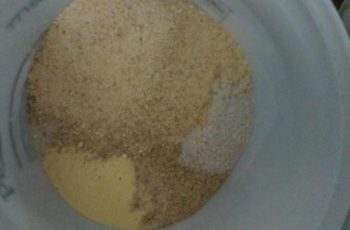
There is another recipe for making mastyrka for crucian carp. For this you will need a loaf of rye bread, several boiled potatoes, and flour. Many people prefer to use cornmeal for this bait.
All ingredients are mixed until smooth, sunflower oil is added, kneaded again, then knead the mass with the addition of flavorings. This is a very quick way to make a simple mastyrka, but pea mastyrka is considered by many fishermen to be the best. Next, the bait is prepared using the technology already given.
Important! When dividing the finished bait into balls, you should do this taking into account the required size for fishing. They should not be made large. If you take bait fishing several times and do not use it completely, you risk not seeing a single bite. It is better to immediately make small balls and take several pieces for bait and lure.
We figured out how to make mastyrka for crucian carp, but now it’s important to find out how to preserve it at home and on the river .
Storing mastyrka at home and while fishing

We wrap a piece of material around all sides of the workpiece. We repeat this operation with all the mastyrka balls. Now, to preserve it at home, we put all the wrapped balls in a plastic bag and put them in the freezer. Now, before each fishing trip, we will need to select a sufficient amount of bait and enjoy the activity of crucian carp.
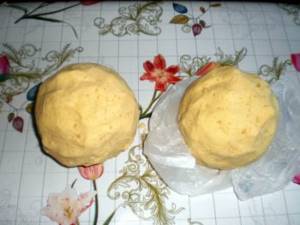
But it is better to use another method of storing mastyrka. To do this, you will need to wrap not all the mastyrka balls in a bag, but place each of the canvas balls in a separate bag. At the same time, you should not allow air into the unused bait - in this case, it becomes crusty and disappears.
Many beginners are unable to put a mastyrka on a hook - it constantly falls off, and fishing turns into flour. To prevent such inconvenience, you need to know the answer to the following question.
